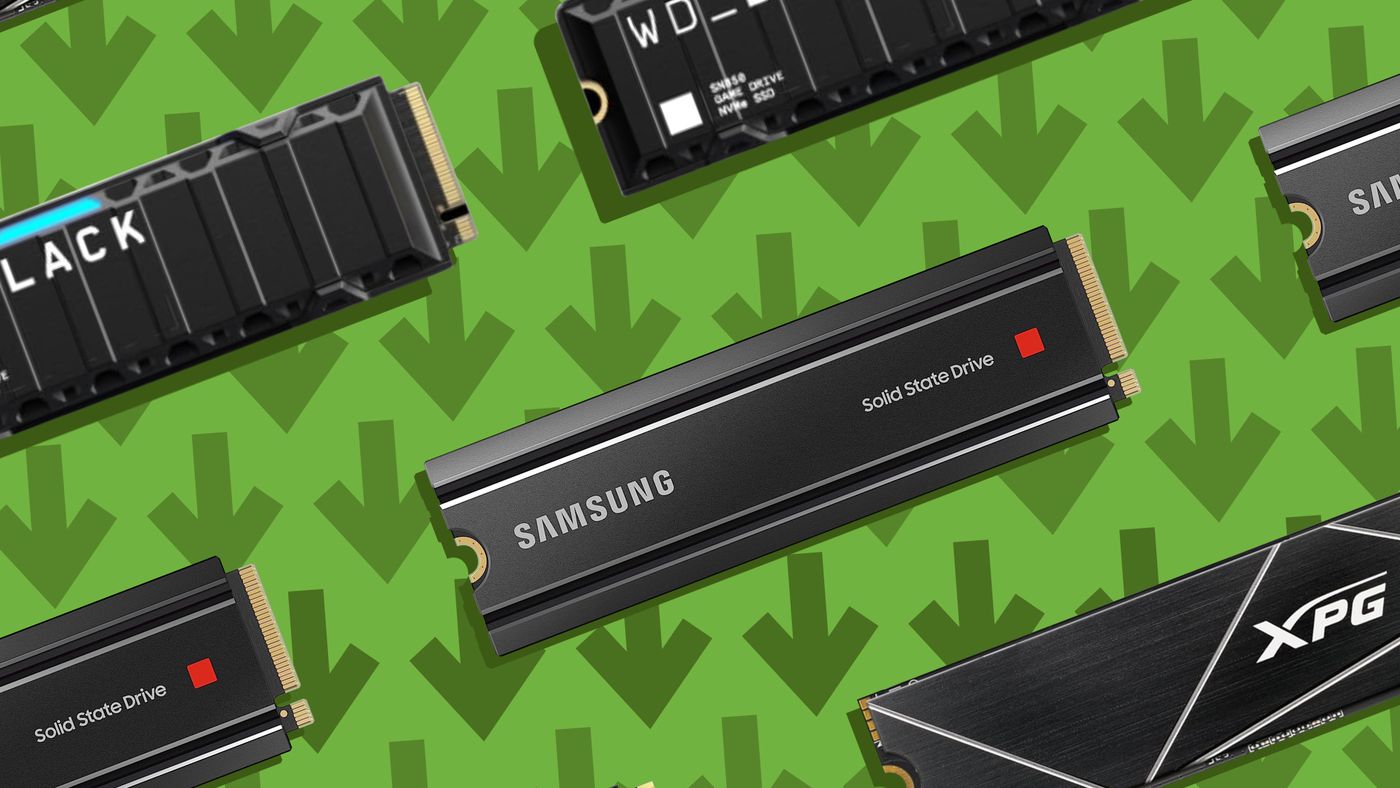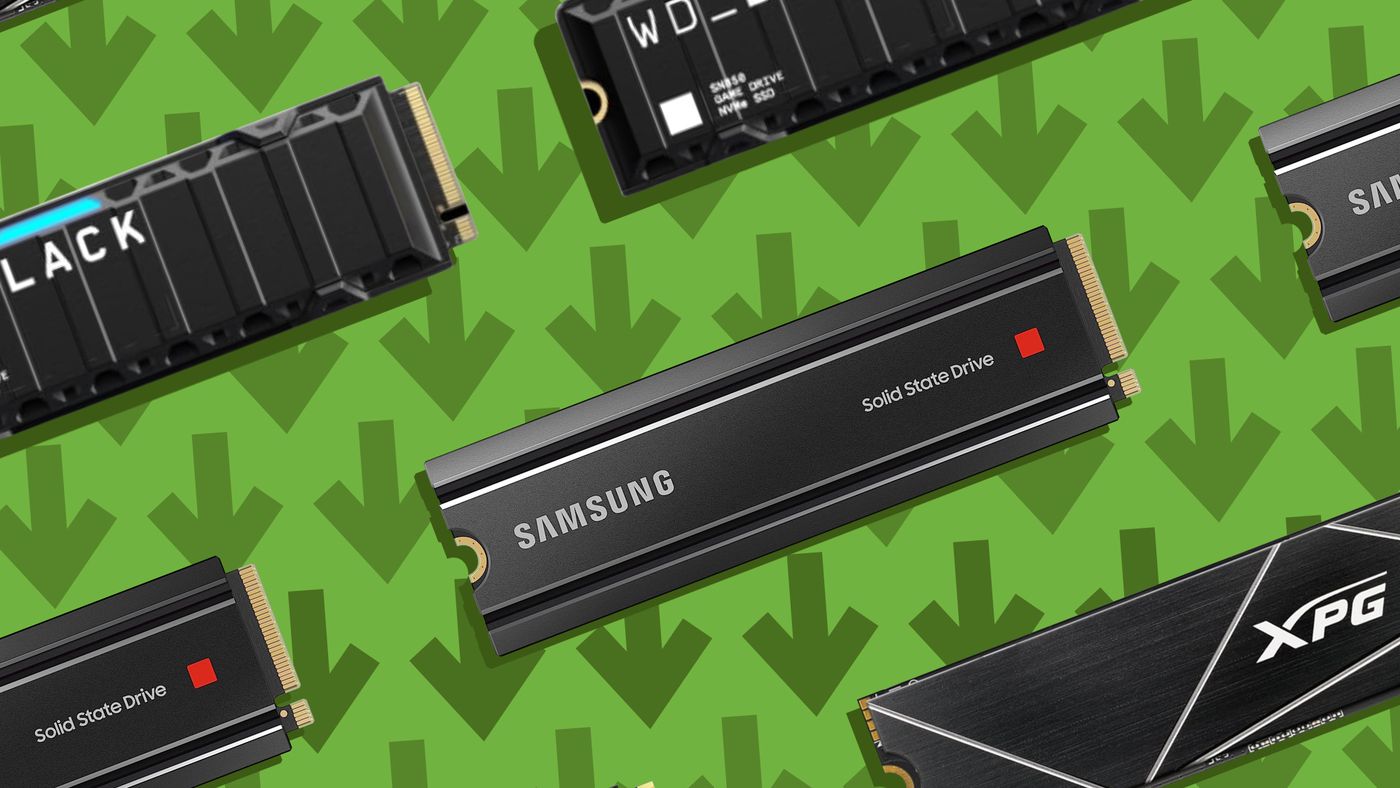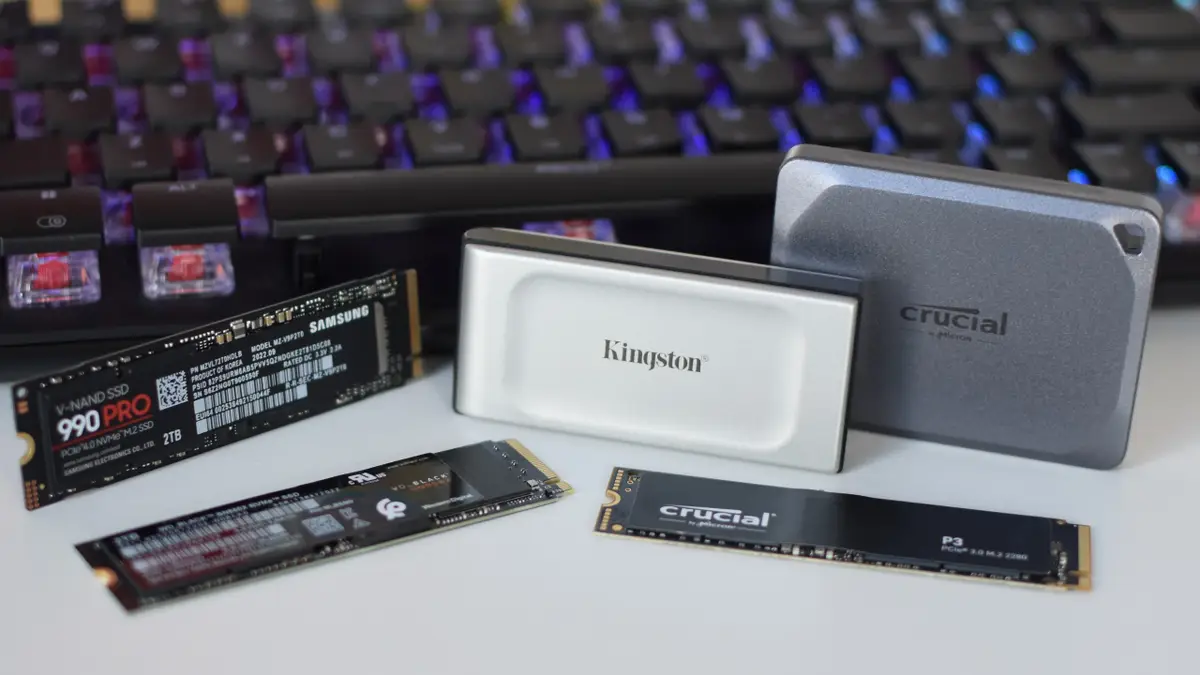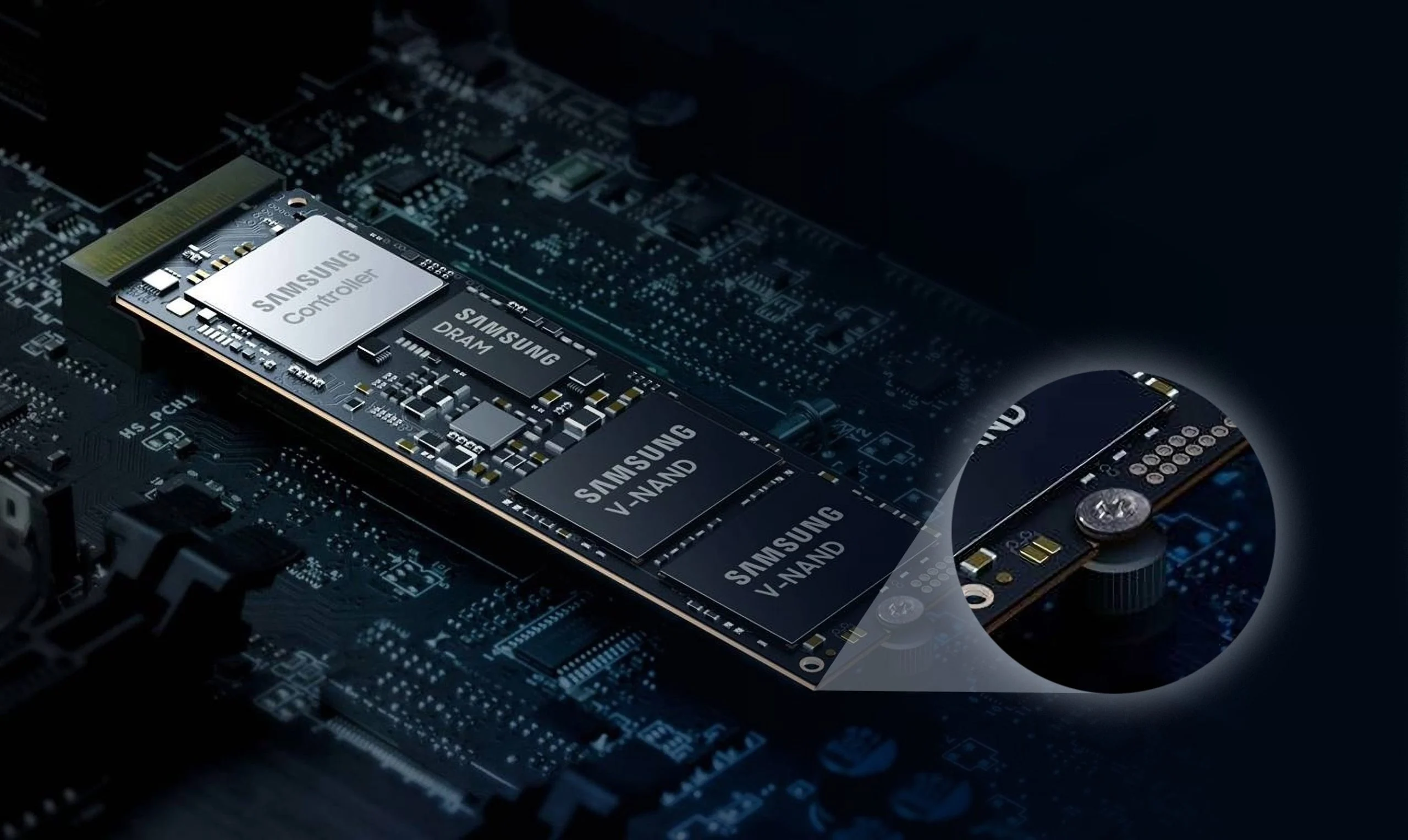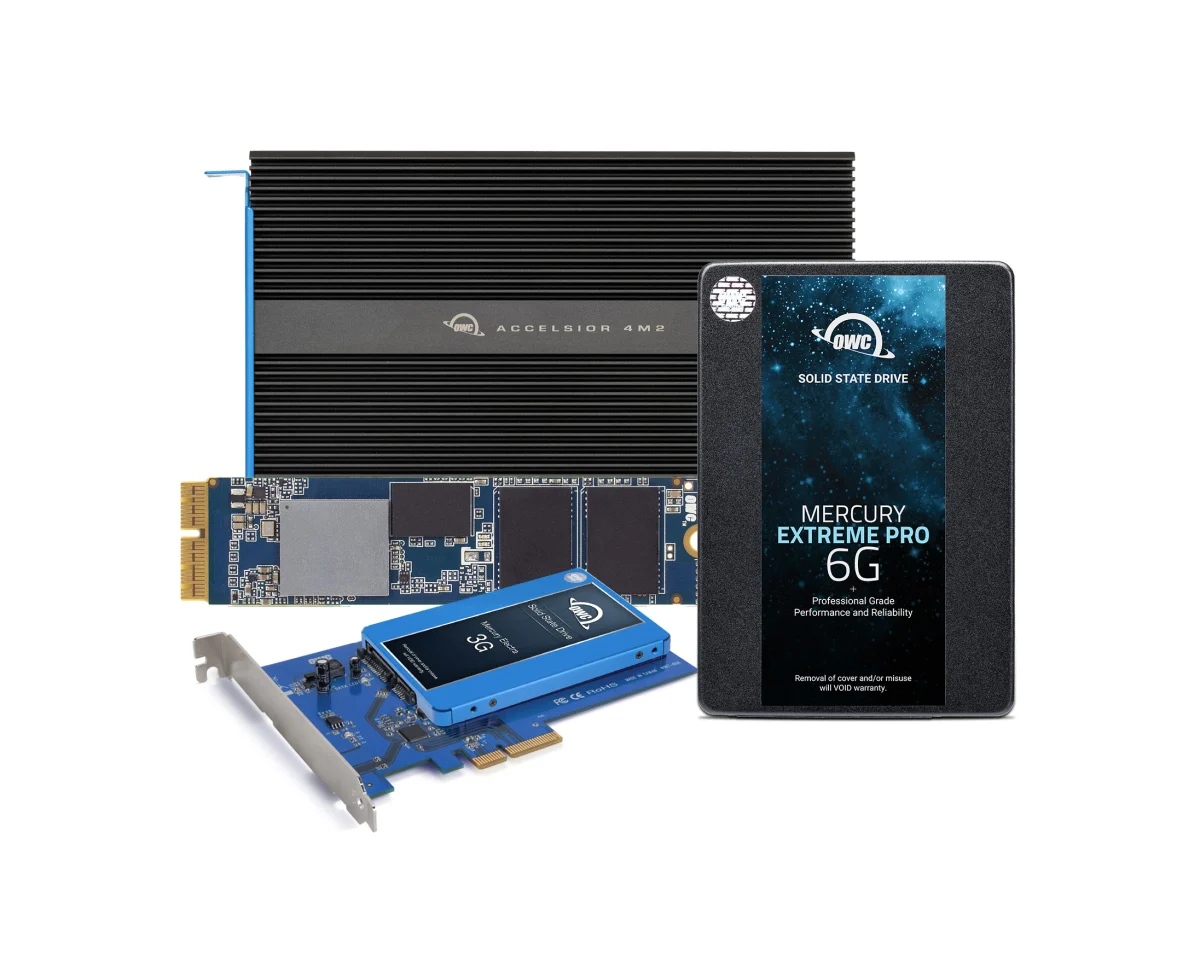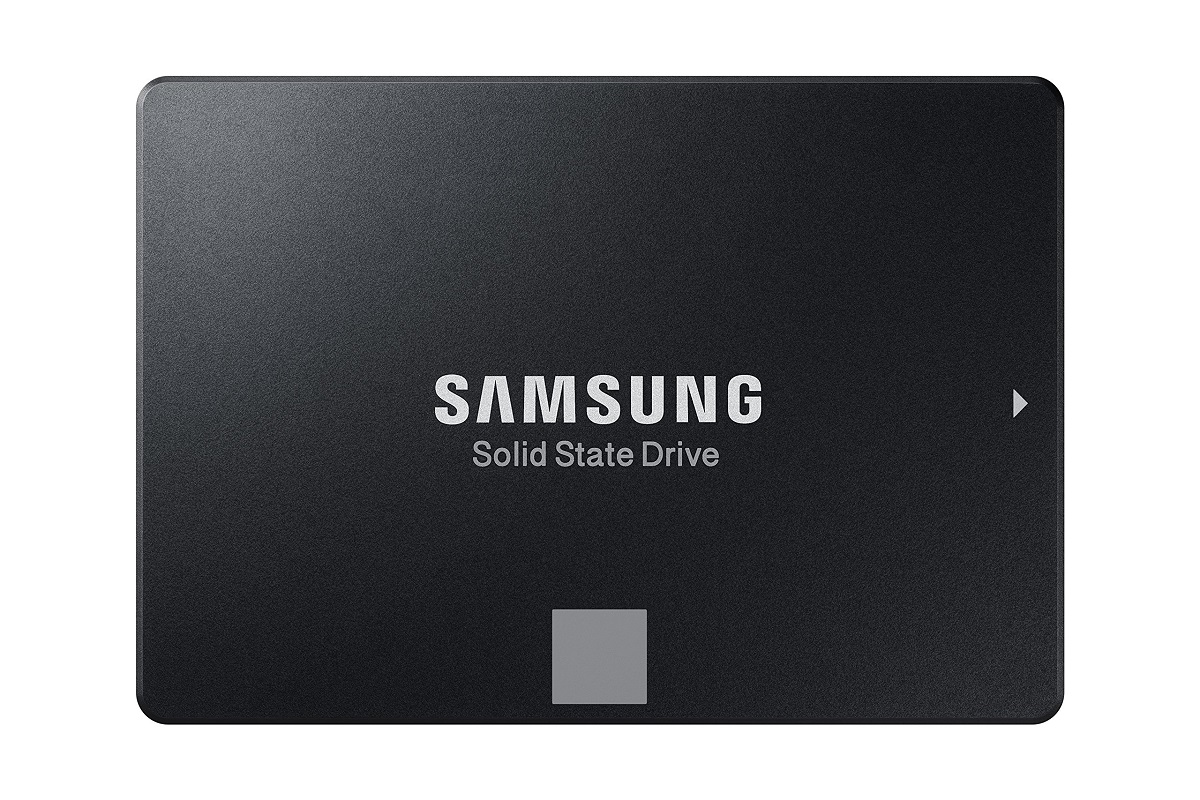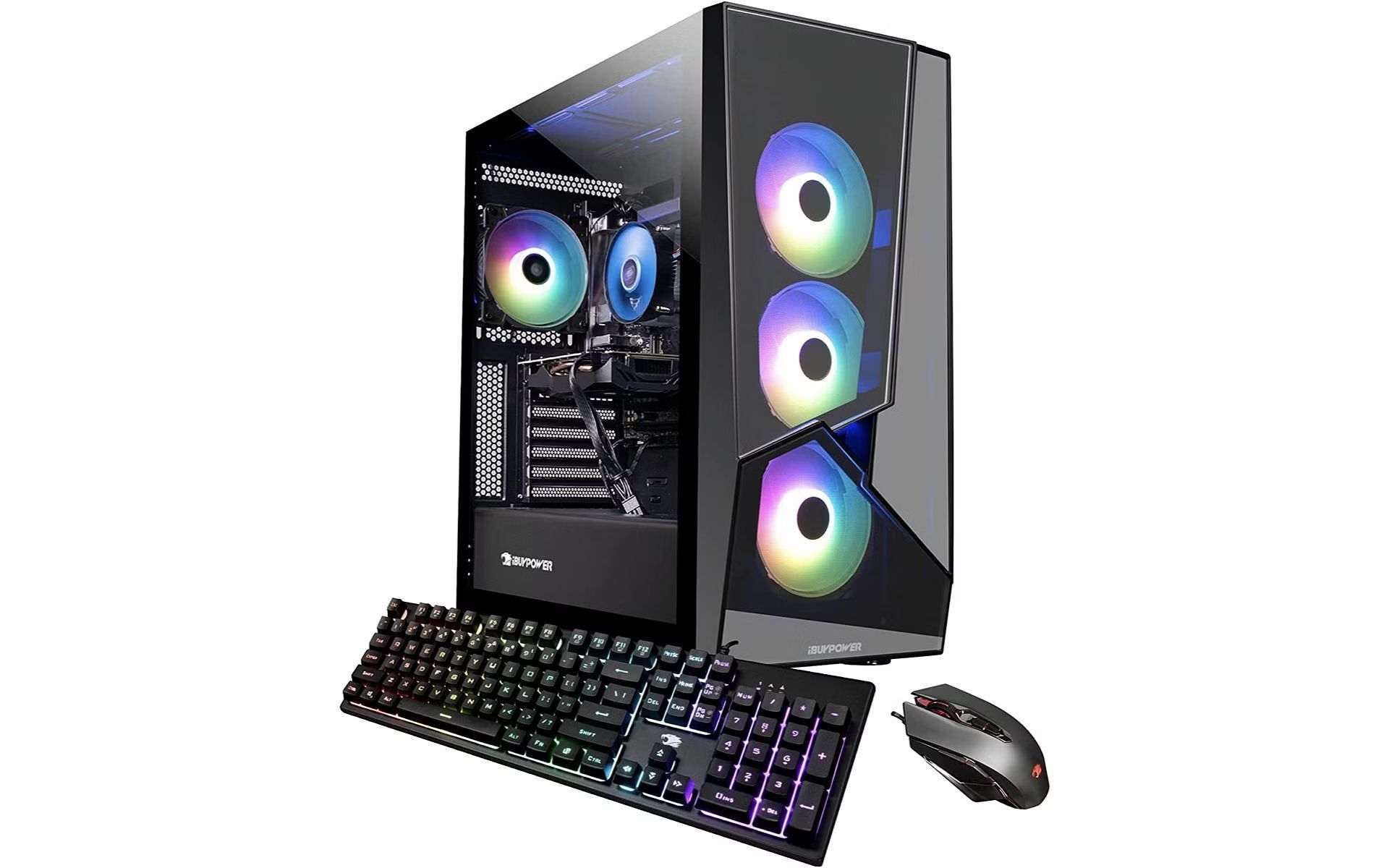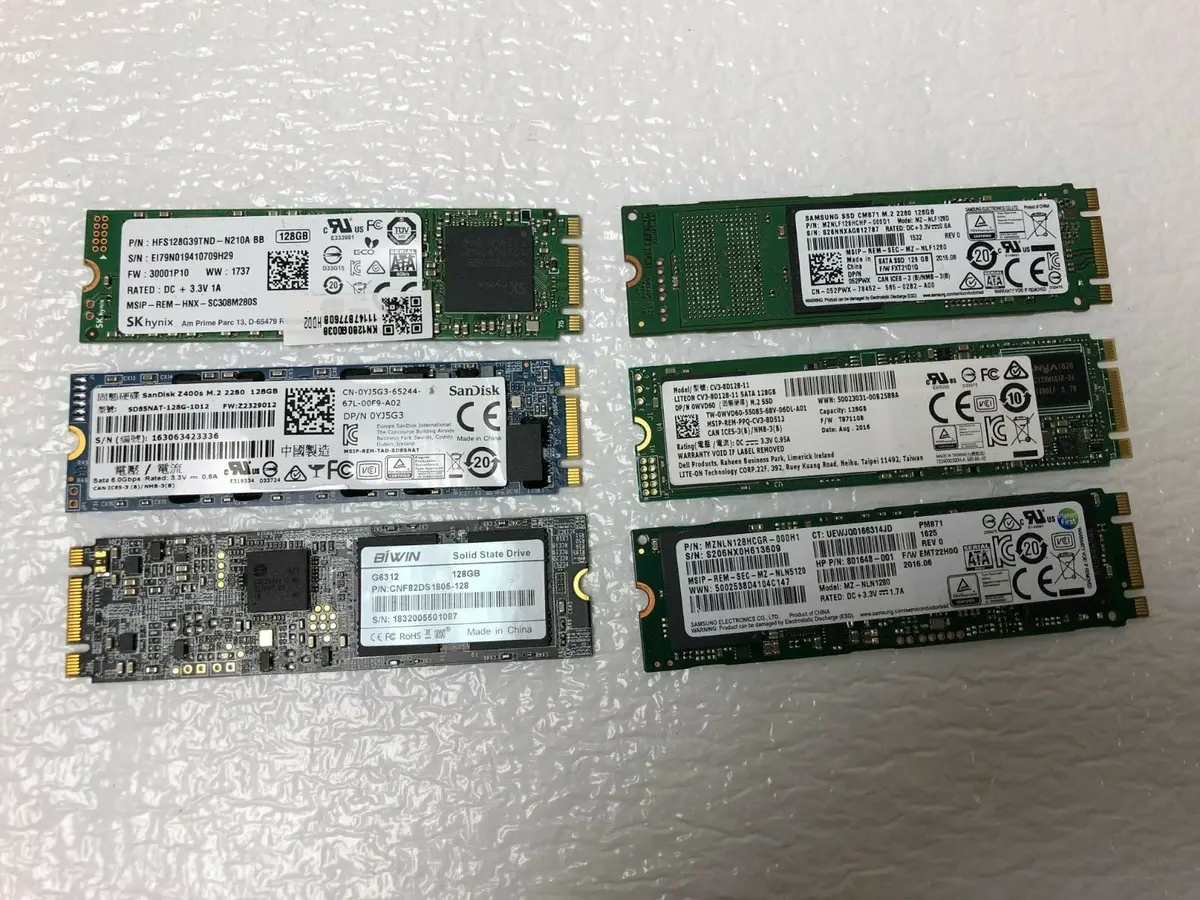Introduction
Welcome to this comprehensive guide on How To Buy An SSD, where we will explore everything you need to know about purchasing a solid-state drive (SSD) for your computer. In today’s fast-paced digital world, SSDs have become increasingly popular due to their superior performance and reliability compared to traditional hard disk drives (HDDs).
As technology continues to advance, SSDs offer faster boot times, quicker data access, and improved overall system responsiveness. Upgrading to an SSD can significantly enhance your computing experience, whether you’re using a desktop, laptop, or even a gaming console.
However, with so many options available on the market, choosing the right SSD can be a daunting task. That’s where this guide steps in to provide you with essential information and expert tips to help you make an informed decision.
In the following sections, we will delve into the various factors you should consider before buying an SSD. Understanding these key considerations will allow you to choose the SSD with the perfect combination of capacity, performance, interface, form factor, and budget to suit your needs.
We will also provide insights into researching brands and models, reading reviews and comparisons, and ensuring compatibility with your system. Additionally, we will discuss the importance of warranty and support when selecting an SSD, and offer effective buying strategies.
Whether you are a tech enthusiast, a professional looking to upgrade your workstation, or simply someone who wants to boost their computer’s performance, this guide will serve as your go-to resource for purchasing an SSD.
So, let’s dive into the world of SSDs and empower you to make the right choice that will revolutionize your computing experience!
Understanding SSDs
If you’re new to the world of SSDs, it’s important to understand the basic principles behind these innovative storage devices. SSDs, or solid-state drives, utilize flash memory to store and retrieve data, instead of the traditional spinning platters found in HDDs.
The key advantage of SSDs is their speed. Unlike HDDs, which rely on mechanical components to read and write data, SSDs use NAND flash memory chips. This allows for lightning-fast data transfer speeds, resulting in quicker boot times, faster application launches, and reduced loading times for games and multimedia files.
SSDs also have no moving parts, making them more durable and resistant to shocks and vibrations. This makes them an ideal choice for portable devices, as they are less likely to suffer data loss or damage due to accidental drops.
Another important aspect to consider is the lifespan of an SSD. Flash memory cells have a limited number of write cycles, resulting in a wear-out mechanism over time. However, modern SSDs employ advanced wear-leveling algorithms, which distribute data evenly across the memory cells, ensuring a longer lifespan and maintaining optimal performance.
It’s worth noting that SSD capacities have increased significantly over the years. Today, you can find SSDs ranging from a few hundred gigabytes to multiple terabytes. Assessing your storage needs is crucial, as SSDs tend to be more expensive per gigabyte compared to HDDs.
Furthermore, as technology evolves, different types of SSDs have emerged, including SATA SSDs, NVMe SSDs, and PCIe SSDs. Understanding the various interface options can help you choose the right SSD for your system and take advantage of its full potential.
Overall, SSDs offer a vast array of benefits, such as improved speed, durability, energy efficiency, and silent operation. Understanding their inner workings and the advantages they bring will assist you in making an informed decision when purchasing an SSD.
Assessing Your Needs
Before diving into the world of SSDs, it’s essential to assess your specific storage requirements and usage patterns. Understanding your needs will help you choose the right SSD with the optimal capacity, performance, interface, and form factor to suit your purposes.
The first consideration is capacity. Determine how much storage space you require for your operating system, applications, games, and files. If you primarily use your computer for basic tasks and don’t store large amounts of data, a smaller capacity SSD, such as 240GB or 500GB, may suffice. However, if you work with large files, edit videos, or store an extensive media library, a higher capacity SSD, such as 1TB or more, might be necessary.
Next, consider the performance requirements for your specific use case. SSDs vary in terms of read and write speeds, which affect how quickly data can be accessed and transferred. If you’re an avid gamer or work with resource-intensive tasks like video editing or 3D rendering, opting for an SSD with higher sequential and random read/write speeds will provide a noticeable boost in performance.
Another factor to evaluate is the interface. SATA SSDs are the most common and compatible with most computers. They offer good performance and are suitable for everyday use. However, if your system supports it, consider NVMe SSDs, which utilize the PCIe interface and can deliver significantly faster speeds, especially for data-intensive workloads.
The form factor is also crucial, particularly if you plan to upgrade a laptop or a small-form-factor desktop. Most SSDs follow the standard 2.5-inch form factor, similar to traditional HDDs. However, there are also smaller M.2 and mSATA SSDs that offer significant space-saving advantages while maintaining high performance.
Finally, budget plays a significant role in determining the SSD that fits your needs. SATA SSDs are generally more affordable, while NVMe and PCIe SSDs tend to be pricier. Consider your budget constraints and find the right balance between capacity, performance, and cost.
By carefully assessing your storage requirements, performance expectations, compatibility needs, and budget limitations, you’ll be able to make an informed decision and select the perfect SSD for your specific utilization.
Capacity
When it comes to choosing the capacity of your SSD, it’s important to consider the storage requirements for your specific needs. The capacity determines how much data you can store on the drive, including your operating system, applications, games, and personal files.
SSDs are available in a wide range of capacities, from small capacities like 120GB to larger capacities exceeding 4TB. Determining the right capacity for your needs involves evaluating your typical storage usage and considering future growth.
If you primarily use your computer for basic tasks like web browsing, word processing, and light multimedia consumption, a smaller capacity SSD, such as 240GB or 480GB, may be sufficient. This will give you enough space for your operating system, essential applications, and a moderate amount of personal files.
If you’re a casual gamer or work with moderately sized files, a mid-range capacity SSD, like 500GB or 1TB, would be a more appropriate choice. This will provide ample space for your operating system, a variety of applications, and a decent collection of games or multimedia content.
However, if you engage in resource-intensive activities like video editing, 3D rendering, or large-scale data storage, opting for a higher capacity SSD, such as 2TB or more, might be necessary to accommodate your demanding storage needs.
It’s worth noting that SSDs should not be filled to their maximum capacity, as it can impact their performance and longevity. Most SSD manufacturers recommend leaving around 10-20% of the drive’s capacity unallocated to ensure optimal performance and improve the lifespan of the SSD.
When considering capacity, it’s also important to think about future growth. If you anticipate your storage needs increasing over time, it may be wise to choose a slightly larger capacity SSD than your current requirements. This will allow you to store additional data and avoid the need for frequent upgrades in the near future.
Ultimately, the capacity of your SSD will depend on your specific usage habits, the size of your files, and your budget. Evaluating your storage needs and considering future growth will help you determine the ideal capacity for your SSD, ensuring you have enough space to store your data while maintaining optimal performance.
Performance
When it comes to SSDs, performance is a critical factor to consider. The performance of an SSD directly affects how quickly your system can boot up, access and transfer data, and run resource-intensive tasks. Understanding the different aspects of SSD performance will help you choose the right drive for your needs.
The read and write speeds of an SSD are key indicators of its performance. Read speed refers to how quickly the SSD can retrieve data from the storage memory, while write speed refers to the speed at which it can write data to the memory.
Sequential read and write speeds are important for tasks that involve large file transfers, such as copying large multimedia files or working with video editing software. The higher the sequential read and write speeds, the faster these tasks will be completed.
Random read and write speeds, on the other hand, are essential for everyday computing tasks and gaming. Random read speed impacts how quickly your operating system and applications can access small files, while random write speed determines how fast your system can save small files and perform multiple simultaneous tasks.
It’s worth noting that NVMe SSDs, which utilize the PCIe interface, typically offer faster performance compared to traditional SATA SSDs. NVMe SSDs can achieve significantly higher sequential and random read/write speeds, making them ideal for demanding tasks like video editing, rendering, and gaming.
However, it’s important to consider whether your system supports NVMe SSDs before purchasing one. While most modern systems have NVMe compatibility, older systems may only support SATA SSDs. In such cases, choosing a SATA SSD with good performance is still a reliable option for everyday use.
Another factor that can impact SSD performance is the controller. The controller is responsible for managing data flow within the SSD, ensuring efficient reading and writing of data. High-quality controllers can improve overall SSD performance and maintain consistent speeds even under heavy workloads.
Lastly, it’s worth considering the endurance rating of the SSD. Endurance refers to the amount of data that can be written to the SSD over its lifetime. SSDs with higher endurance ratings are more resilient and can last longer, especially if you frequently write large amounts of data or perform intensive tasks.
By understanding the different performance aspects of SSDs, such as read/write speeds, controller quality, and endurance, you can make an informed decision and choose an SSD that meets your performance requirements and enhances your overall computing experience.
Interface
The interface is a crucial aspect to consider when purchasing an SSD, as it determines how the drive communicates with your computer’s motherboard and affects the overall performance of the SSD. There are several interface options available, each offering varying levels of speed and compatibility.
The most common interface for SSDs is SATA (Serial ATA), which is compatible with most computers. SATA SSDs utilize the same interface as traditional hard disk drives (HDDs) and can be easily connected to SATA ports on your motherboard. While SATA SSDs offer improved performance over HDDs, they have limitations in terms of speed compared to other interface types.
Another interface gaining popularity is NVMe (Non-Volatile Memory Express), which utilizes the PCIe (Peripheral Component Interconnect Express) interface. NVMe SSDs offer significantly faster speeds compared to SATA SSDs, making them ideal for demanding tasks like gaming, video editing, and data-intensive workloads.
However, it’s important to check whether your system supports NVMe SSDs before making a purchase. While most modern computers have NVMe compatibility, some older systems may only support SATA drives. If your system does not support NVMe, opting for a SATA SSD is still a reliable choice for everyday use.
PCIe SSDs are another type of SSD that offer exceptional performance. Rather than utilizing a specific interface like SATA or NVMe, PCIe SSDs plug directly into a PCIe slot on the motherboard. This allows for even faster speeds, especially when paired with the latest PCIe generation, such as PCIe 4.0. PCIe SSDs are typically used in high-end workstations and gaming systems where top-tier performance is desired.
When choosing an SSD interface, it’s important to consider the limitations of your system and the available connections on your motherboard. Some older systems may have limited SATA ports or PCIe slots, which may impact your choice of SSD. Additionally, check the specifications of your motherboard to ensure compatibility and maximum performance with the SSD interface you select.
Overall, the interface of an SSD plays a significant role in its performance and compatibility with your system. Understanding the differences between SATA, NVMe, and PCIe interfaces will help you choose the right SSD for your specific needs, whether it’s for everyday tasks or high-performance workloads.
Form Factor
The form factor refers to the physical shape and size of an SSD. Choosing the right form factor is important to ensure compatibility with your computer or device, especially if you plan to upgrade a laptop or a small-form-factor desktop.
The most common form factor for SSDs is the 2.5-inch SATA SSD, which has the same size as traditional HDDs. These SSDs can be easily installed in desktop computers or laptops that have a 2.5-inch drive bay. They often come with a 7mm or 9.5mm thickness, allowing for a seamless fit into existing drive slots.
Another popular form factor is the M.2 SSD, which is smaller and more compact. M.2 SSDs are typically used in ultrabooks, thin laptops, and small-form-factor desktops. They plug directly into the M.2 slot on the motherboard, eliminating the need for cables or drive bays. M.2 SSDs come in different lengths, such as 2242, 2260, and 2280, with the numbers indicating the dimensions in millimeters.
mSATA SSDs are another form factor that is less common today but may still be found in older laptops and desktops. They are similar in size to a RAM module and connect to the motherboard using a mini-SATA connector. Although not as widely available as 2.5-inch or M.2 SSDs, mSATA SSDs can still serve as a suitable upgrade option for compatible systems.
It’s important to note that the form factor chosen must be supported by your computer or device. Verify the specifications of your motherboard, laptop, or other devices to determine which form factors are compatible.
Some motherboards may include multiple M.2 slots or SATA ports, allowing for the installation of multiple SSDs. This provides the flexibility to mix and match different form factors based on your storage requirements and available connections.
In addition to the physical dimensions, you should take into account the heat dissipation capability of the SSD form factor. M.2 SSDs, for example, can generate more heat due to their compact size and may require proper cooling solutions like heatsinks or dedicated thermal pads to prevent thermal throttling.
Choosing the right form factor for your SSD depends on the system you’re using and the availability of compatible slots or connectors. Whether you opt for a traditional 2.5-inch SATA SSD, a small and compact M.2 SSD, or an mSATA SSD, ensuring compatibility and considering the limitations of your system will help you make the right choice.
Budget
When it comes to purchasing an SSD, budget is an important factor to consider. SSDs generally tend to be more expensive than traditional hard disk drives (HDDs), but the price has significantly decreased over the years, making them more accessible to a wider range of users.
Setting a budget that aligns with your needs and financial capabilities can help narrow down your options and ensure that you choose an SSD that offers the best value for your money.
The first step is to determine the maximum amount you’re willing to spend on an SSD. Consider your overall budget for upgrading or replacing your storage solution and allocate a portion of it for the SSD. It’s important to strike a balance between your budget and the desired capacity, performance, and features of the SSD.
Generally, SATA SSDs are more budget-friendly compared to NVMe or PCIe SSDs. If you’re looking for a solid upgrade over a traditional HDD without breaking the bank, a SATA SSD is a reliable option that offers decent performance at an affordable price point.
If your budget allows for it and you require higher performance, NVMe or PCIe SSDs can provide a significant speed boost and are worth considering, especially for demanding tasks like gaming or professional workloads. These SSDs tend to be more expensive due to their faster speeds and cutting-edge technology.
It’s important to keep an eye out for sales, discounts, and promotions offered by retailers, both online and offline. SSD prices can fluctuate, and you may be able to find a great deal that fits within your budget. Additionally, comparing prices from different retailers can help you find the best available offer for the specific SSD model you’re interested in.
While it’s tempting to opt for the cheapest SSD available, it’s essential to balance your budget with quality and reliability. Choose a reputable brand that has positive reviews and offers good warranty and customer support. Investing in a reliable SSD from a reputable manufacturer ensures that your data is secure and that the SSD will perform optimally for years to come.
By setting a budget and considering the trade-offs between capacity, performance, and cost, you can make an informed decision and find an SSD that meets your needs while staying within your financial means.
Researching Brands and Models
When buying an SSD, it’s important to conduct thorough research on different brands and models to ensure that you make an informed decision. This step helps you understand the reputation, quality, and performance of various SSD options available on the market.
Start by exploring well-known and reputable brands that specialize in SSD manufacturing. Brands such as Samsung, Crucial, Western Digital, Kingston, and SanDisk have established themselves as trusted manufacturers with a track record of producing high-quality SSDs.
Reading reviews and comparisons from reputable sources is an excellent way to gain insights into which brands and models perform well. Look for in-depth reviews that discuss factors such as read/write speeds, endurance, reliability, and overall user experiences.
Pay attention to real-world performance tests, as synthetic benchmarks may not accurately reflect day-to-day usage scenarios. Reviews that include practical tests, such as boot times, file transfers, and application loading speeds, can provide a more accurate assessment of an SSD’s performance in everyday use.
Additionally, consider checking user reviews and ratings on popular online retailers or tech forums. These reviews often offer valuable insights into the experiences of other customers who have purchased and used the SSDs you’re interested in. Look for reviews that discuss factors like speed, reliability, compatibility, and customer support.
Comparing specifications, features, and warranties between different models can also help you make an informed decision. Analyze factors such as capacity options, read/write speeds, endurance ratings, and warranty periods. Additionally, consider if the SSD includes features like data encryption, power-loss protection, or advanced error correction mechanisms.
Another aspect to consider is compatibility with your system. Check the official websites of the SSD manufacturers to ensure that the chosen brand and model are compatible with your motherboard, operating system, and any other specific requirements of your setup. Compatibility is crucial to ensure seamless integration and optimal performance.
Keep in mind that while brand reputation and customer reviews provide valuable insights, individual experiences may vary. What works for one person may not work for another due to different system configurations or usage habits. Consider the overall consensus and prioritize reviews that align with your specific needs and requirements.
By researching brands, reading reviews, comparing specifications, and considering compatibility, you can gain a comprehensive understanding of different SSD options available on the market. This research will empower you to make an informed decision and choose the best brand and model that meets your performance needs and reliability expectations.
Reading Reviews and Comparisons
When purchasing an SSD, reading reviews and comparisons is a valuable step to gather insights and make an informed decision. Reviews provide firsthand experiences and feedback from experts and users who have tested and used the SSDs you’re interested in.
Start by exploring reputable technology websites, tech forums, and online retailers that offer detailed SSD reviews. These reviews often cover various aspects, including performance, reliability, compatibility, and overall user experience.
Pay attention to reviews that provide detailed information about read/write speeds, random access times, and real-world performance in tasks like booting up the system, file transfer speeds, and application loading times. These practical performance tests can give you a clear idea of how the SSD will perform in everyday use.
Consider reviews that discuss the SSD’s endurance rating, which indicates how much data the drive can handle over its lifespan. High-quality reviews may also provide insights into the SSD’s firmware, controller, and error correction mechanisms, giving you a deeper understanding of the drive’s overall quality and reliability.
Comparisons between different SSD models and brands can be particularly helpful in evaluating their strengths and weaknesses. Look for comparisons that focus on similar price ranges or specific performance requirements. These comparisons can help you determine which SSD offers the best value for your money or which one excels in a particular area.
Be cautious of biased or overly promotional reviews that might prioritize advertising over objective assessment. Seek reviews from multiple sources to gather a range of perspectives and avoid relying solely on a single review or opinion.
While expert reviews provide valuable insights, user reviews can also be an important resource. Reading user reviews on popular online retailers or tech forums can offer insights into real-world experiences. Look for recurring comments and feedback about issues such as reliability, compatibility, and customer support.
Consider the overall consensus from reviews and comparisons and weigh the importance of different factors based on your specific needs. Remember that individual experiences may vary, so prioritize reviews that align with your requirements and usage scenarios.
In addition to reviews, take advantage of comparison tools provided by online retailers or technology websites. These tools allow you to compare specifications, prices, and user ratings side by side, making it easier to evaluate different SSD options and make an informed decision.
By reading various reviews and comparisons, you can gather a wealth of information about different SSDs, helping you confidently select the one that meets your performance needs, reliability expectations, and budget constraints.
Considerations for Compatibility
Before purchasing an SSD, it’s important to consider compatibility factors to ensure that the drive will work seamlessly with your system. Compatibility is crucial for optimal performance, reliability, and a hassle-free installation process. Here are some key considerations to keep in mind:
Interface Compatibility: Different SSDs use different interfaces, such as SATA, NVMe, or PCIe. Ensure that your system supports the chosen SSD’s interface. Check your motherboard’s specifications or consult the manufacturer’s website for compatibility information.
M.2 Keying: If you’re opting for an M.2 SSD, pay attention to the “key” type. M.2 SSDs come in different key types, such as B, M, and B+M, which determine the connector and supported features. Match the key type of the SSD with the corresponding socket on your motherboard.
Capacity: Check if your system supports the capacity of the SSD you plan to purchase. Some older systems may have limitations on the maximum supported capacity, so ensure that your system can handle the desired capacity.
Form Factor: Consider the physical form factor of the SSD, whether it’s a 2.5-inch SATA SSD, an M.2 SSD, or another form factor. Ensure that your system has the necessary drive bays, connectors, and slots to accommodate the chosen form factor.
Operating System Compatibility: Check if the SSD is compatible with your operating system. Most modern SSDs are compatible with popular operating systems like Windows, macOS, and Linux. However, for niche or older operating systems, it’s prudent to verify compatibility beforehand.
Firmware and Driver Updates: Regular firmware updates can improve performance and address compatibility issues. Check if the SSD manufacturer provides firmware updates and whether the process is user-friendly. Additionally, ensure that the required drivers are available for your operating system, especially for NVMe or PCIe SSDs.
Other Hardware Compatibility: Consider other hardware components that may impact compatibility, such as the power supply unit (PSU) and the motherboard’s SATA or PCIe slots. Ensure that your PSU can provide sufficient power for the SSD, and check if any specific requirements exist for installing the SSD in certain slots.
Data and Cable Compatibility: Determine if any additional cables or adapters are required for connecting the SSD to your system. For example, some M.2 SSDs may require a specific adapter to fit into a PCIe slot or special cables for connectivity.
Checking compatibility ensures a smooth installation process and maximizes the performance of the SSD. It reduces the risk of encountering issues such as unrecognized drives, limited functionality, or data transfer problems. Be diligent in reviewing your system’s compatibility with the chosen SSD to avoid any complications.
If you have any doubts or questions about compatibility, consult technical documentation, forums, or the manufacturer’s support channels for assistance. It’s better to seek clarification and ensure compatibility before making a purchase rather than encountering issues after the fact.
By considering compatibility factors, you can confidently choose an SSD that seamlessly integrates with your system, delivers optimal performance, and enhances your computing experience.
Warranty and Support
When purchasing an SSD, it’s important to consider the warranty and support provided by the manufacturer. The warranty not only protects your investment but also reflects the manufacturer’s confidence in the quality and reliability of their product. Here are some key points to consider regarding warranty and support:
Warranty Period: Check the length of the warranty offered for the SSD. Most reputable manufacturers provide warranties ranging from three to five years, although some may offer longer coverage. A longer warranty period provides peace of mind and demonstrates the manufacturer’s commitment to standing behind their product.
Warranty Coverage: Understand what the warranty covers. Manufacturers typically cover defects in material and workmanship during the warranty period. However, warranties may not include damage caused by misuse, accidents, or improper installation. Read the warranty terms and conditions carefully to ensure you meet the requirements for coverage.
Customer Support: Consider the level and quality of customer support provided by the manufacturer. Look for manufacturers that offer accessible and responsive customer support channels, such as phone or email assistance. Prompt and helpful customer support can be invaluable if you encounter any issues or have questions regarding your SSD.
Advanced Replacement: Some manufacturers offer advanced replacement services, where they replace a faulty SSD before receiving the defective unit. This can minimize downtime and ensure that you have a functioning drive as quickly as possible. Check if this service is available and if any additional fees apply.
Reputation: Research the manufacturer’s reputation for honoring warranty claims and providing excellent customer support. Look for reviews or feedback from other customers who have experienced warranty situations. Positive experiences and a strong reputation for customer service indicate a manufacturer that you can rely on for warranty-related matters.
Return Policies: Familiarize yourself with the manufacturer’s return policies in case you need to return the SSD for any reason. Understand the requirements, such as the timeframe for returns and the condition in which the SSD should be returned.
Registering the SSD: Many manufacturers require product registration to activate the warranty. Take the time to register your SSD as per the manufacturer’s guidelines to ensure that you’re eligible for warranty coverage if needed.
Consider warranty and support as an essential aspect of your purchase decision. It provides an added layer of protection against potential issues and demonstrates the manufacturer’s commitment to their product. A reliable warranty and excellent customer support can save you time, money, and stress should any problems arise with your SSD.
Before making a purchase, carefully read the warranty terms and conditions provided by the manufacturer. If you have any questions or concerns, reach out to the manufacturer’s support team for clarification. Don’t hesitate to seek information about warranty and support policies to make an informed decision and choose an SSD from a manufacturer that values customer satisfaction and offers reliable support.
Buying Strategies
When it comes to purchasing an SSD, employing effective buying strategies can help you make the most informed decision and ensure you get the best value for your money. Here are some key strategies to consider:
Set a Budget: Determine the maximum amount you’re willing to spend on an SSD and allocate a portion of your overall budget for storage upgrades. This will guide your choices and prevent overspending.
Consider Your Needs: Assess your specific storage requirements, performance needs, and compatibility considerations. Determine the capacity, performance, interface, and form factor that best fit your needs and usage patterns.
Research Brands and Models: Conduct thorough research on various brands and models of SSDs. Read expert reviews, user feedback, and comparisons to gather insights into the quality, performance, and reliability of different options on the market.
Be Mindful of Sales and Discounts: Keep an eye out for sales, discounts, and promotions offered by retailers. SSD prices can fluctuate, and you may be able to find a great deal that fits within your budget.
Consider the Overall Value: Evaluate the balance between price and performance to determine the best value for your money. Consider the specific features, performance, warranty, and customer support offered by each SSD to determine which one offers the most comprehensive value package.
Check for Compatibility: Ensure that the SSD you choose is compatible with your system. Verify the interface compatibility, form factor, capacity support, and any other specific requirements of your system to avoid any compatibility issues.
Read User Reviews: Seek feedback from other users who have purchased and used the SSDs you’re interested in. User reviews can provide real-world experiences and insights into aspects such as reliability, compatibility, and customer support.
Compare Prices and Retailers: Compare prices from different retailers to find the best available offer for the SSD model you’re interested in. Consider reputable retailers with good customer support and return policies.
Consider Future Upgrades: Anticipate your future storage needs and consider whether the SSD you’re choosing allows for future upgrades or expansion. This can help ensure that your investment will remain relevant for longer.
Weigh the Importance of Features: Consider the additional features offered by the SSD, such as encryption, power-loss protection, or software utilities. Determine how significant these features are to your specific needs and priorities.
By adopting these buying strategies, you can navigate the SSD market with confidence and make a well-informed decision. Remember, taking the time to research, compare, and consider your specific needs will lead to the best possible outcome and ensure that you choose an SSD that meets your expectations and enhances your computing experience.
Where to Buy
When it comes to purchasing an SSD, there are various options for where you can buy them. Understanding the different purchasing avenues can help you choose the most convenient and reliable option for your specific needs. Here are some common places to consider when buying an SSD:
Retail Stores: Local electronics stores, computer stores, and big-box retailers often carry a range of SSDs. This option allows you to physically examine the products and seek assistance from knowledgeable staff. However, the selection may be limited, and prices may be higher compared to online retailers.
Online Retailers: Online marketplaces, such as Amazon, Newegg, and Best Buy, offer a wide variety of SSDs from different brands. Online shopping provides convenience, a larger selection, and the ability to compare prices and customer reviews. Ensure that you choose reputable retailers with good customer support and return policies.
Manufacturer’s Website: Many SSD manufacturers have their own online stores where you can purchase their products directly. Buying from the manufacturer’s website can provide some advantages, such as access to special deals, promotional offers, and sometimes exclusive products or variations.
Specialized Online Retailers: Specialized online retailers that focus on computer components, like TigerDirect and B&H Photo, can provide a broad selection of SSDs along with detailed specifications and user ratings. These retailers often cater specifically to computer enthusiasts and may offer additional services or support for PC builders.
Auction and Resale Platforms: Auction platforms like eBay or reseller platforms like Craigslist may offer used or refurbished SSDs at lower prices. However, exercise caution when purchasing from these platforms, as the condition and warranty support may be uncertain.
Local Computer Repair Shops: Local computer repair shops or computer service providers sometimes sell SSDs. They may have a limited selection but can offer advice, installation services, and even data migration assistance. Supporting local businesses can also be beneficial in terms of building relationships and receiving personalized service.
Manufacturer Outlets: Some SSD manufacturers have physical outlets or official stores where you can purchase their products. These outlets often offer direct customer support, the latest product offerings, and special promotions. Check the manufacturer’s website for information on any physical retail locations.
Consider factors such as convenience, price, selection, customer support, and return policies when deciding where to buy your SSD. It’s important to strike a balance between finding the best deal and purchasing from a reputable retailer that offers good after-sales support.
Regardless of where you choose to buy, make sure to verify the authenticity of the product and check that it comes with the appropriate warranty coverage. Researching the retailer’s reputation, reading customer reviews, and confirming the product’s authenticity can help ensure a safe and satisfactory purchasing experience.
By considering the various options and factors, you can select the most suitable purchasing avenue that meets your requirements and provides a seamless buying experience for your new SSD.
Conclusion
Congratulations! You’ve now learned the essential factors to consider when buying an SSD. From understanding SSD technology to assessing your needs, researching brands and models, and considering compatibility, performance, warranty, and buying strategies, you are well-equipped to make an informed decision and find the perfect SSD for your specific requirements.
As you embark on your journey to upgrade your storage solution, keep in mind that the perfect SSD will depend on your unique needs, budget, and system specifications. Take the time to evaluate your storage requirements, consider your performance needs, and understand the compatibility considerations for your system.
Thoroughly researching brands and models, reading reviews and comparisons, and considering factors such as warranty and customer support are essential steps in finding a reliable and high-performing SSD. Remember to balance all these considerations with your budget to ensure you’re getting the most value for your money.
Once you’ve made your decision and purchased your SSD, follow proper installation procedures and consult any provided documentation or online resources for guidance. Take advantage of any included software or utilities to optimize the performance and longevity of your SSD.
Remember to always back up your data before making any changes to your storage setup, such as migrating or cloning your existing drive to the new SSD. This will ensure that you don’t lose any important files or data during the transition process.
In conclusion, upgrading to an SSD can significantly enhance your computing experience, bringing faster boot times, improved application performance, and quicker data access. By considering the factors discussed in this guide, you are well-equipped to find the perfect SSD that meets your needs, fits your budget, and enhances your overall computing experience.
Now, get ready to enjoy the benefits of faster and more reliable storage as your new SSD transforms your computing experience to new heights. Happy SSD shopping!







